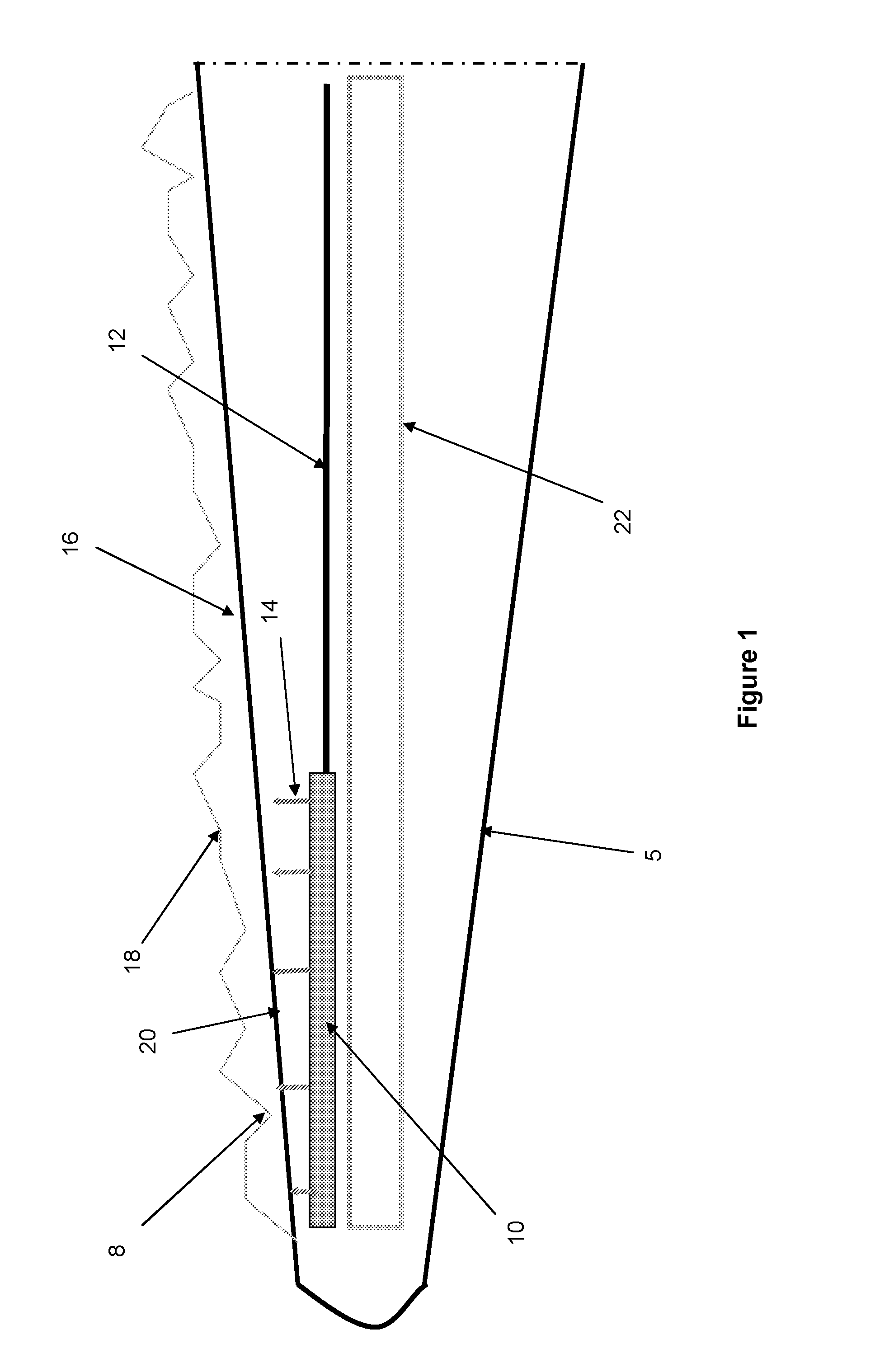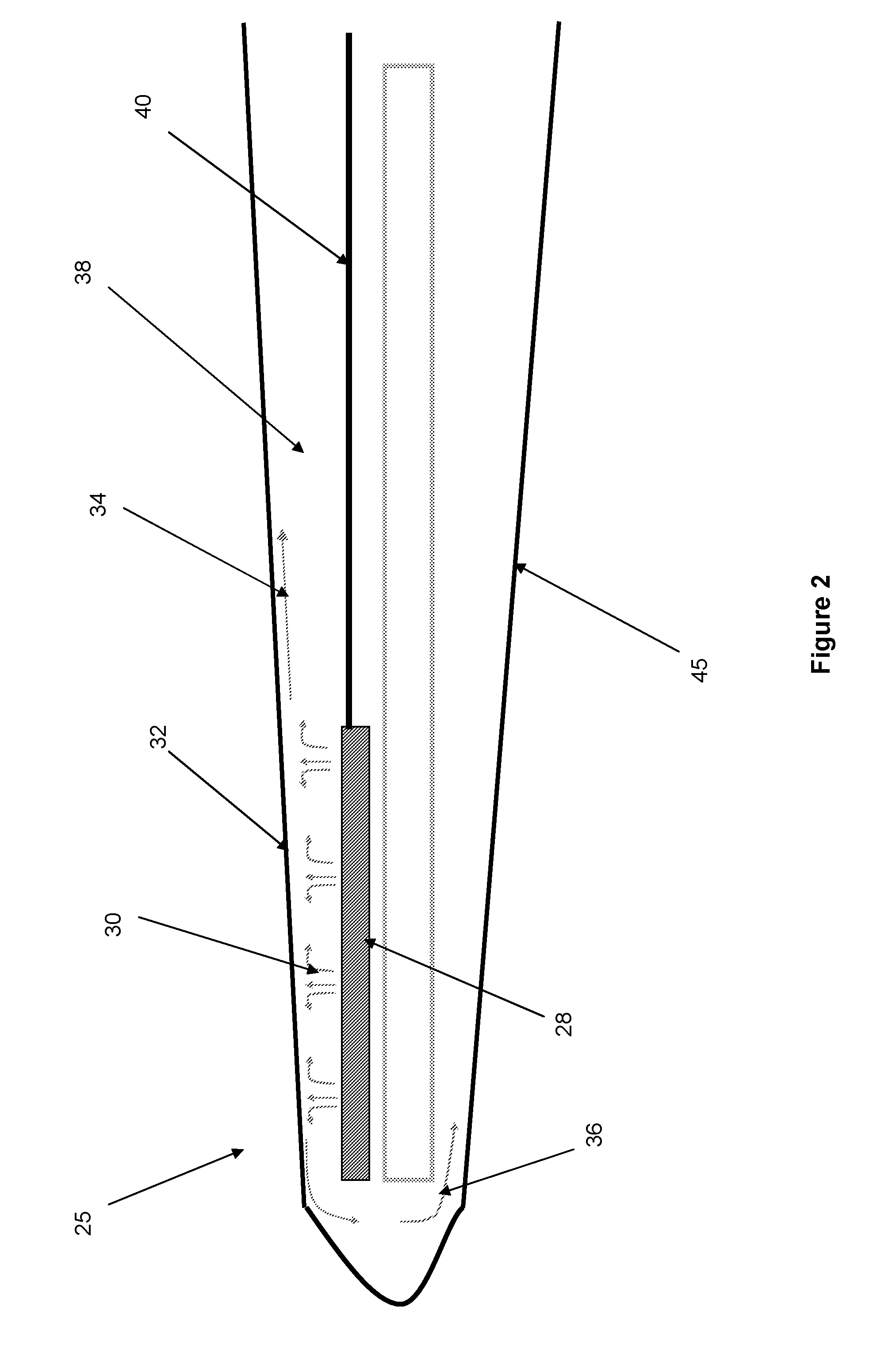De-icing of a wind turbine blade
a wind turbine blade and blade technology, applied in the direction of wind energy generation, liquid fuel engine components, coolant flow control, etc., can solve the problems of reducing blade life, increasing root load, and reducing power production, so as to achieve the effect of effective de-icing of the aerodynamically important part, minimizing the additional weight of the structure, and great beneficial effect on the torque generated by the blad
- Summary
- Abstract
- Description
- Claims
- Application Information
AI Technical Summary
Benefits of technology
Problems solved by technology
Method used
Image
Examples
Embodiment Construction
[0020]FIG. 1 shows a wind turbine generator blade 5 in cross section. The blade 5 includes a spar 22 to provide structural support for the blade and mounted to it is a heat reservoir 10 for receiving a flow of hot air through an insulated duct 12. Said duct 12 is connected to a hot air generator, for instance a fan or pump flowing air across a heating element. Alternatively, waste energy from the wind turbine generator, such as within the nacelle, may also provide a source of heat.
[0021]Projecting from the heat reservoir 10 is a plurality of ducts 14 delivering hot air to a leading edge 20 of the blade. In so doing, the hot air heats the leading edge 20 sufficiently to allow the removal of ice 18 that has formed over the leading edge, through to partially melting and falling away from the blade so as to better provide performance.
[0022]Under freezing conditions, an accretion of ice 18 may build up on the leading edge of the blade so as to change the shape as well as add mass in an u...
PUM
 Login to View More
Login to View More Abstract
Description
Claims
Application Information
 Login to View More
Login to View More - R&D
- Intellectual Property
- Life Sciences
- Materials
- Tech Scout
- Unparalleled Data Quality
- Higher Quality Content
- 60% Fewer Hallucinations
Browse by: Latest US Patents, China's latest patents, Technical Efficacy Thesaurus, Application Domain, Technology Topic, Popular Technical Reports.
© 2025 PatSnap. All rights reserved.Legal|Privacy policy|Modern Slavery Act Transparency Statement|Sitemap|About US| Contact US: help@patsnap.com



